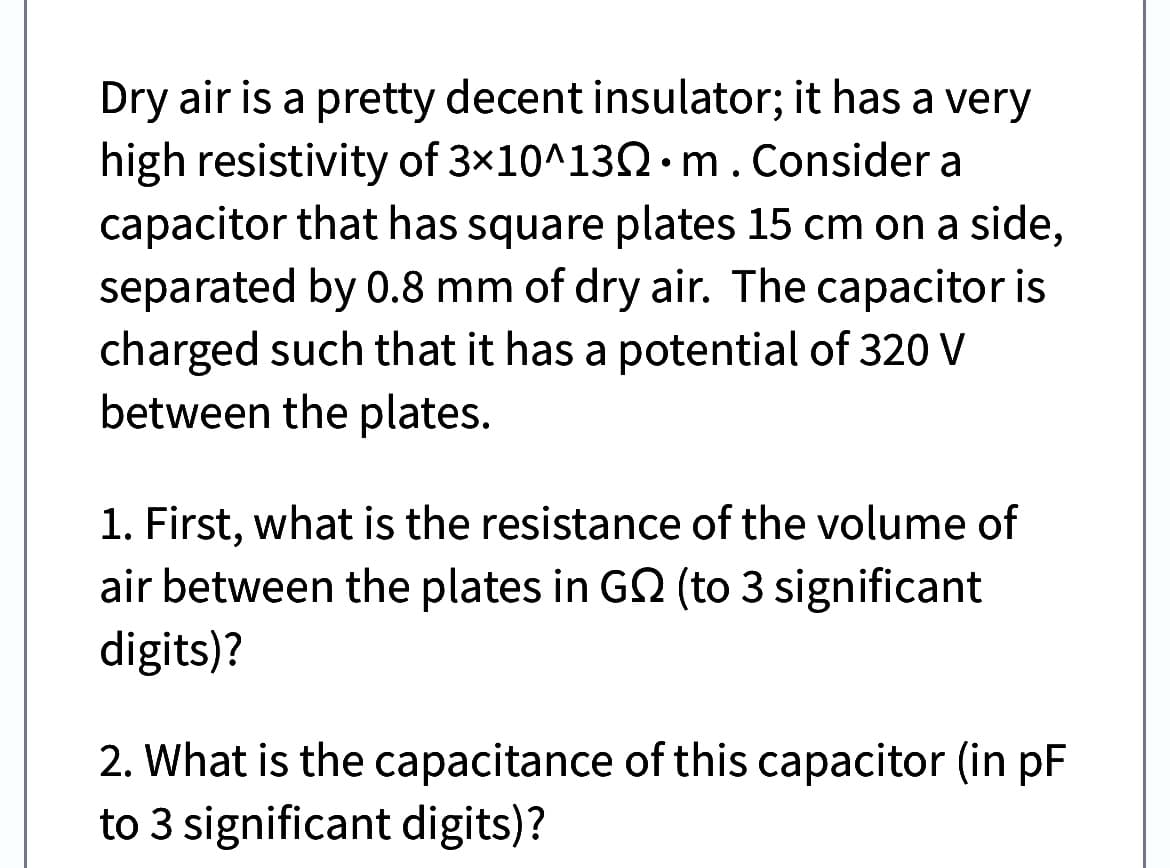Dry air is a pretty decent insulator; it has a very high resistivity of 3x10^130 m. Consider a capacitor that has square plates 15 cm on a side, separated by 0.8 mm of dry air. The capacitor is charged such that it has a potential of 320 V between the plates. 1. First, what is the resistance of the volume of air between the plates in GQ (to 3 significant digits)? 2. What is the capacitance of this capacitor (in pF to 3 significant digits)?
Dry air is a pretty decent insulator; it has a very high resistivity of 3x10^130 m. Consider a capacitor that has square plates 15 cm on a side, separated by 0.8 mm of dry air. The capacitor is charged such that it has a potential of 320 V between the plates. 1. First, what is the resistance of the volume of air between the plates in GQ (to 3 significant digits)? 2. What is the capacitance of this capacitor (in pF to 3 significant digits)?
Related questions
Question
U07

Transcribed Image Text:Dry air is a pretty decent insulator; it has a very
high resistivity of 3x10^130 m. Consider a
capacitor that has square plates 15 cm on a side,
separated by 0.8 mm of dry air. The capacitor is
charged such that it has a potential of 320 V
between the plates.
1. First, what is the resistance of the volume of
air between the plates in G2 (to 3 significant
digits)?
2. What is the capacitance of this capacitor (in pF
to 3 significant digits)?
Expert Solution
This question has been solved!
Explore an expertly crafted, step-by-step solution for a thorough understanding of key concepts.
Step by step
Solved in 2 steps
